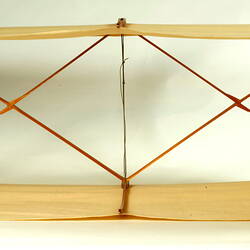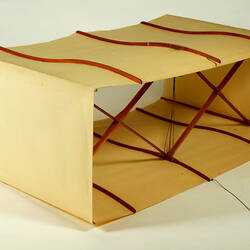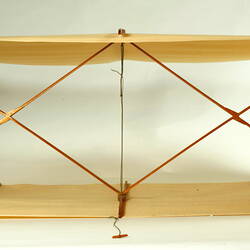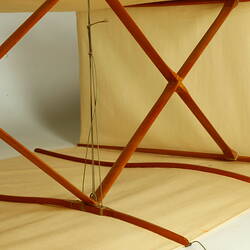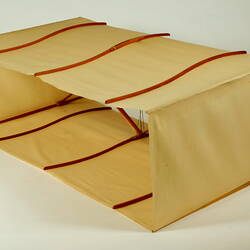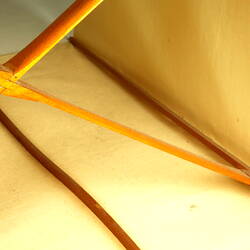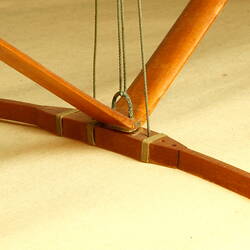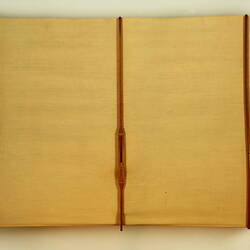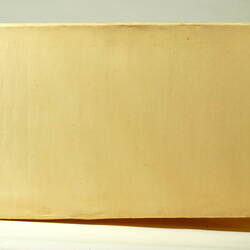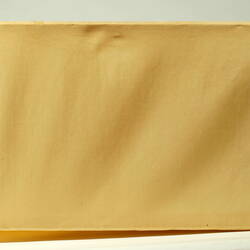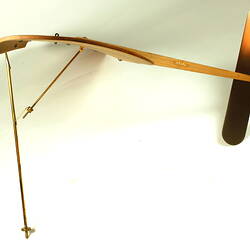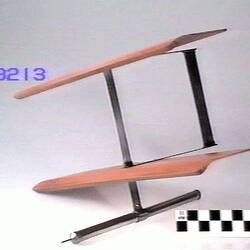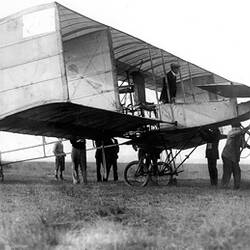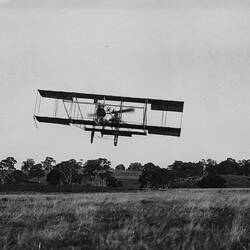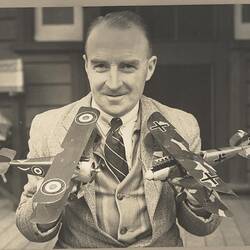Summary
This half-scale model of Lawrence Hargrave's rigid box kite with reverse curves was commissioned by the Museum and received in 1961. It was built by Harold P. Wood who had made models for the Museum since the 1920s.
This design was the subject of Hargrave's final paper presented to the Royal Society of New South Wales on 1 December 1909. The two horizontal lifting surfaces have a convex and concave profile in the form of a shallow curve. Hargrave noted that this design enhanced stability but caused a reduction in lift and efficiency corresponding to the increase in the curvature. A slight curve was found to be the most efficient design. Hargrave's experimental work with box kites demonstrated that this design was highly effective in generating lift. His experiments with tethered kites at Stanwell Park south of Sydney proved the superiority of the box kite design in 1894-95. By linking four box kites together, Hargrave was lifted some 16 feet clear of the ground on 12 November 1894. The box kite became the preferred method of construction for most early aircraft including the 1903 Wright Flyer which made the first successful powered flight in December 1903.
More Information
-
Collection Names
-
Collecting Areas
-
Acquisition Information
Purchase
-
Maker of Item Modelled
Mr Lawrence Hargrave, Sydney, New South Wales, Australia, 1908-1909
-
Modelmaker
Mr Harold P. Wood, Mornington, Greater Melbourne, Victoria, Australia, 1961
-
Classification
-
Category
-
Discipline
-
Type of item
-
Overall Dimensions
715 mm (Length), 412 mm (Width), 245 mm (Height)
Measurement by Conservation staff.
-
Model Scale
1:2
-
Keywords

